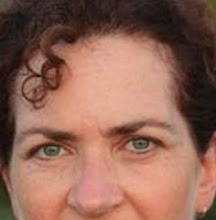
It's usually the flowering phase of plants that attracts our attention and receives our compliments. Beautifully colored petals, all sorts of interesting shapes and scents--soon fade to a much less appreciated seed-- brown and boring.
The thistles in the field have gone by.
Their downy parachutes will be wonderfully soft in goldfinch nests.
"Have you seen...." is an effort to discover the unusual beauty in things not usually appreciated for their beauty.


































































12 comments:
Hi Nina,
I'm with you on the thistles. The flowers are pretty and the butterflies seem to love them, but when I see the masses of fluffies I always think of how happy the goldfinches will be when making their nests. I found a goldfinch nest one time that had blown out of a tree before they had a chance to utilize it. The thistledown in the bottom was just as soft as can be--a lovely little bed for baby birds.
It amazes me, too, that as delicate as the wisps seem, they're surprisingly strong. Nice "loft" for insulation, too.
That last picture of the single parachute is beautiful.
Dear Nina,
Lovely, lovely essay.
I do agree finding the beauty in everything makes for a beautiful life.
Thank you. This was just beautiful.
Your photos are so pretty..
just like Mother Nature.
Sherry
I notice this type of beauty also, Nina, and take time for photos. Yours are awesome.
Nina, lovely photos. I like the flowers, but I think I like the downy parachutes more. They're just too cool.
I am a big fan of your "Have you seen.." series and love the close-ups of the seed heads, but that isn't a thistle. It is Spotted Knapweed, Centaurea biebersteinii, a member of the sunflower family (Asteraceae) and is a native of central Europe to Siberia. It is considered an invasive, noxious plant in the US, although I think it is beautiful.
http://www.nps.gov/plants/alien/fact/cebi1.htm
True thistles bloom later than knapweed, and should be coming on in our area about now, in late July and August.
FYI,
~Kathi
Kathi-
Interestingly, I went to the same site to try to find out what this was, and I saw this
http://www.nps.gov/plants/alien/fact/ciar1.htm
about Canada thistle.
I wish I had a better picture because everything sound right about it.
I too am a fan of your "have you seen" series and particularly like this one on the thistle ( Cirsium sp). Your lovely photos show why they are favorites of goldfinches --the downey parachutes (pappus) make a wonderful addition to any nest. This down,so beautifully shown in your close-up picture,is characteristic of thistles, but sadly, PAPPUS OR DOWN DOES NOT OCCUR WITH KNAPWEEDS,. As a result ,goldfinches may eat the seeds of knapweed (Centaurea sp), but alas -- there is nothing to line their nests with. Fortunately, the seeds of knapweed are destined to drop to the ground and not take to the air like thistle , dandilion and that super flier-- the milkweed seed.
Technical note: If one checks out the Peterson Field Guide to Wildflowers (p.302) there are lots of thistle species(12) . They are widely distributed and bloom throughout the summer (as the blog correctly pictures). On p. 306 are pictures of "THISTLE-LIKE FLOWER HEADS,STAR-THISTLES,KNAPWEEDS, ETC" !! So indeed, thistles and knapweeds can be confusing . Furthermore,if you checkout the pictures of whole plants in the two wedsites given in the two preceding comments, it is again easy to see why one would confuse the thistle in the blog with knapweed. But if you carefully compare the picture of the single flower in the Spotted Knapweed site with the first blog picture,it is obvious ,even to the untrained observer ,that the two are not the same. Even if you did not have the 3 blog pictures showing the thistle down,however, the first blog picture does not compare favorably with any of the 6 knapweed descriptions or pictures in Peterson. To this trained field person with lots of experience in plant identification, thistles rule the day.
It would apper to me that the purplish bracts suggest that Nina may have introduced us to the Canada Thistle (Cirsium arvense), the commonest one around.
July 20, 2007 12:23 PM
Sorry for my misidentification. I was certain that I had figured out the plant I had seen and photographed a week or so ago, and was equally certain that your photo was the same as mine.
Perhaps I should stick to dogs and cats, with the occasional bird thrown in. I'm obviously not a "Plant-Doc."
~Kathi, who face is red and who abjectly apologizes for interfering
Thanks for the help, KatDoc and Cestoady. I think the discussion of blogs is great for learning new things. Having pictures alone to go on is hard, if that's all you've got to work with. It's never quite the same as having the actual plant in front of you.
I should have mentioned that this plant was terribly spiny--I know that doesn't show well in the photos.
That fact would have made this less confusing.
On a good day I see the beauty in things not usually noted for their beauty but some times these things pass me by.-thanks for pointing it out.
Post a Comment